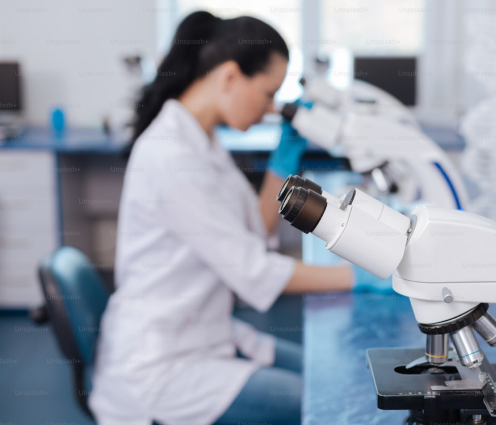

The medical device diagnostics sector has long been at the forefront of technological innovation. From point-of-care testing to advanced imaging and molecular diagnostics, these tools have transformed the way diseases are detected and managed. Yet, as the industry has raced ahead scientifically, it now faces an equally pressing challenge: how to reconcile innovation with environmental responsibility. Sustainability is no longer a peripheral concern; it is becoming central to the way diagnostics companies design, manufacture, and deliver their products.
The Environmental Footprint of Diagnostics
Medical diagnostics, like many areas of healthcare, can have a significant environmental impact. Single-use plastics, electronic waste, high energy consumption during manufacturing, and complex global supply chains all contribute to a sizeable carbon footprint. A study by Health Care Without Harm estimated that healthcare accounts for nearly 5% of global greenhouse gas emissions, and diagnostics plays a role in this figure.
Consider the millions of lateral flow tests used globally during the COVID-19 pandemic. While these devices were crucial to controlling the spread of infection, they also generated an unprecedented amount of biomedical waste. This experience has highlighted the urgent need for sustainable innovation in diagnostics, where scalability does not come at the cost of environmental stewardship.
Designing with Sustainability in Mind
Sustainability must be embedded at the design stage rather than added as an afterthought. Eco-design principles encourage manufacturers to consider the entire lifecycle of a product, from material sourcing and energy use through to end-of-life disposal.
For diagnostic devices, this might mean exploring alternatives to virgin plastics, using biodegradable polymers, or increasing the proportion of recycled materials. It could also involve modular device architecture, where components such as sensors or casings can be reused or replaced rather than discarded. Forward-thinking companies are already experimenting with eco-friendly packaging, reducing unnecessary layers of plastic and cardboard, and adopting inks and dyes that are less harmful to the environment.
Manufacturing and Supply Chain Responsibility
Greener design is only one part of the equation. Manufacturing processes and supply chains must also adapt. Energy-intensive production facilities, water use, and emissions from transport all contribute to the overall environmental impact of diagnostics. Companies that commit to renewable energy sources, energy-efficient production lines, and localised supply chains are not only reducing their carbon footprint but also building resilience against future disruptions.
Transparency is critical here. Investors, regulators, and healthcare providers increasingly expect detailed reporting on environmental, social, and governance (ESG) metrics. Medical device companies that can demonstrate sustainable sourcing, reduced waste, and low-carbon manufacturing will be better positioned to attract funding, win tenders, and strengthen their reputations.
The Role of Regulation and Policy
The regulatory landscape is beginning to reflect these shifts. The European Union’s Green Deal, alongside stricter regulations on plastics and waste, is shaping the way medtech companies think about sustainability. Similarly, procurement decisions within healthcare systems such as the NHS are increasingly influenced by environmental criteria. The NHS has committed to achieving net zero by 2040, and suppliers who cannot demonstrate sustainable practices may find themselves excluded from contracts.
This places diagnostics firms at a strategic crossroads. Sustainability is no longer simply a matter of corporate social responsibility but a competitive differentiator in securing access to markets.
Innovation Meets Sustainability
The drive for greener diagnostics is spurring new innovations. Miniaturisation is a prime example: smaller devices typically use fewer materials and consume less energy. Digitalisation is another, as data-driven diagnostics reduce reliance on physical consumables and enable remote monitoring, cutting down on patient travel and associated emissions.
Meanwhile, advances in biotechnology are opening doors to bio-based materials for diagnostic components. These could one day replace petroleum-derived plastics and dramatically reduce the environmental burden of disposable devices. Companies are also exploring circular economy models, where products are designed to be reused, refurbished, or recycled within a closed loop rather than ending up in landfill.
Patients and Professionals Demand Change
Sustainability is not being driven solely by regulators and investors. Patients and healthcare professionals are increasingly aware of the environmental implications of the tools they use. Hospitals are looking for ways to reduce waste without compromising quality of care, and patients themselves are asking tougher questions about the sustainability credentials of the products they encounter.
In a competitive market, companies that align with these values will build stronger relationships with stakeholders. Sustainability can no longer be dismissed as an optional add-on; it is fast becoming an expectation.
Challenges on the Road Ahead
Of course, there are real obstacles to overcome. Sustainable materials can be more expensive, supply chains for greener alternatives are not always reliable, and balancing performance with eco-friendly design is not straightforward. Safety and efficacy remain paramount in diagnostics, and any shift in materials or processes must meet rigorous clinical and regulatory standards.
Yet, these challenges should be seen as opportunities. Just as the industry responded with unprecedented speed and innovation during the pandemic, it can rise to the sustainability challenge. Those who act early will not only mitigate risk but also gain competitive advantage.
Towards a Greener Future
The journey towards sustainable diagnostics will require collaboration across the ecosystem. Manufacturers, healthcare providers, regulators, and researchers must work together to develop standards, share best practices, and invest in the technologies that will make greener devices viable at scale.
Ultimately, sustainability in diagnostics is about ensuring that innovation today does not come at the expense of tomorrow. The medical device industry has a responsibility not just to improve health outcomes but also to safeguard the planet. By embedding sustainability into every stage of the diagnostic lifecycle, from design to disposal, the sector can build devices that are not only smarter and faster but also greener.
The diagnostics industry has long been associated with precision, accuracy, and innovation. Adding sustainability to that list will ensure it remains relevant, responsible, and resilient in a world where environmental concerns are inseparable from healthcare progress.


Looking for a New Role – or Searching for Top Talent? Let’s Talk
Whether you're exploring your next career move or looking to hire skilled professionals, HRS is here to help.
We connect ambitious individuals with exciting opportunities across science, technology, and innovation-led sectors. From early careers to executive search, our expert recruiters work closely with both candidates and employers to ensure the perfect match.
If you're hiring, we’ll help you find the right people. If you’re job hunting, we’ll help you take the next step. Browse our latest jobs or get in touch to find out how we can support you.

